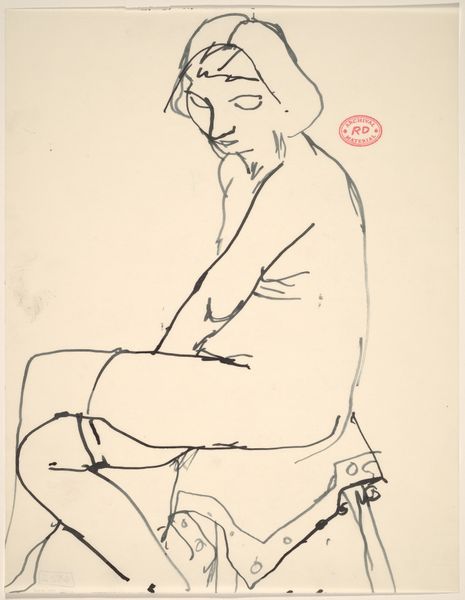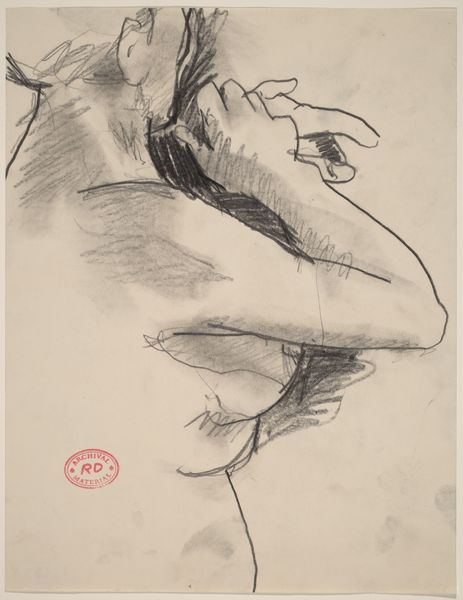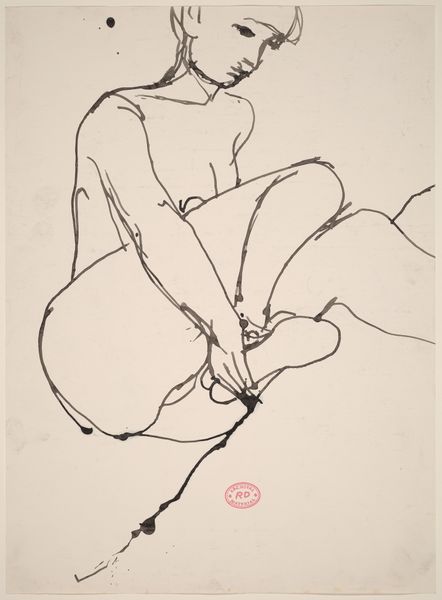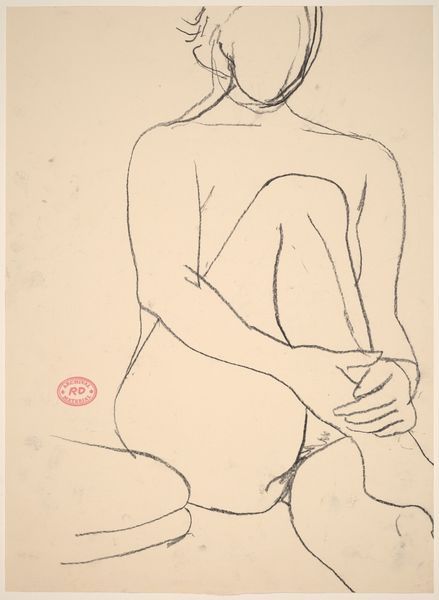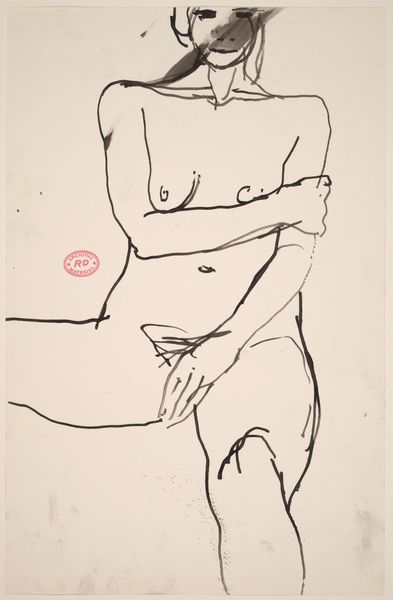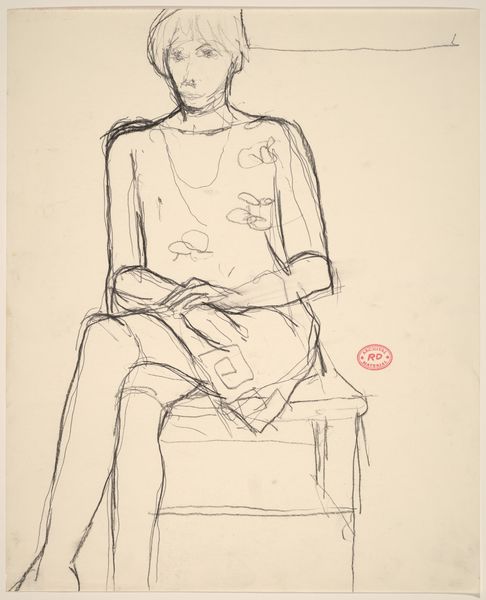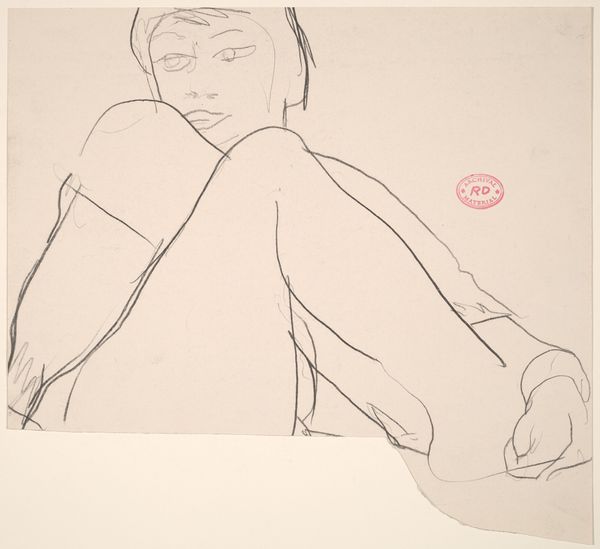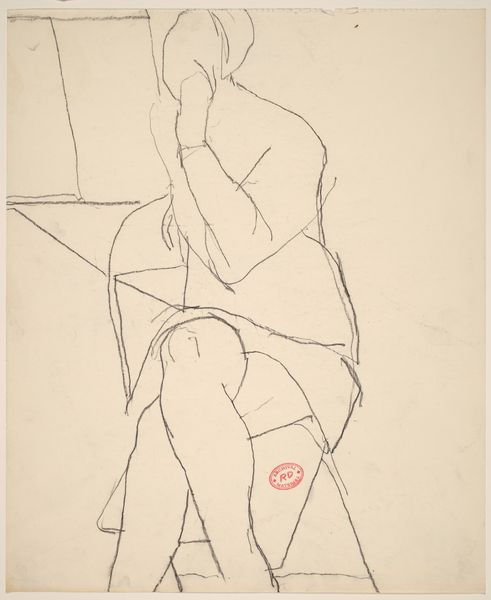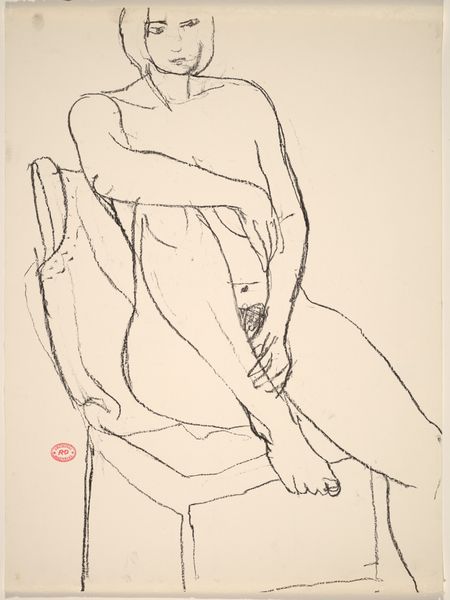![Untitled [female nude in stockings seated on draped stool] by Richard Diebenkorn](/_next/image?url=https%3A%2F%2Fd2w8kbdekdi1gv.cloudfront.net%2FeyJidWNrZXQiOiAiYXJ0ZXJhLWltYWdlcy1idWNrZXQiLCAia2V5IjogImFydHdvcmtzLzM5ZTUyYzMzLWM4ZmQtNGVlMC1hNzVlLTU0MDMwYzM3NWNlYS8zOWU1MmMzMy1jOGZkLTRlZTAtYTc1ZS01NDAzMGMzNzVjZWFfZnVsbC5qcGciLCAiZWRpdHMiOiB7InJlc2l6ZSI6IHsid2lkdGgiOiAxOTIwLCAiaGVpZ2h0IjogMTkyMCwgImZpdCI6ICJpbnNpZGUifX19&w=3840&q=75)
Untitled [female nude in stockings seated on draped stool] 1955 - 1967
0:00
0:00
drawing, ink
#
portrait
#
drawing
#
ink drawing
#
pen sketch
#
figuration
#
bay-area-figurative-movement
#
ink
#
nude
Dimensions: overall: 35.6 x 27.6 cm (14 x 10 7/8 in.)
Copyright: National Gallery of Art: CC0 1.0
Curator: The sparseness is striking; almost melancholic, don't you think? Editor: It's a study in vulnerability. Here, we see Richard Diebenkorn's ink drawing, dating between 1955 and 1967. It's titled simply, "Untitled [female nude in stockings seated on draped stool]." A title, interestingly enough, that’s descriptive, almost detached. Curator: True, but it's that very sparseness that communicates so much. The visible tension in the figure, conveyed through the suggestive power of ink, evokes introspection, and perhaps a hint of sadness. The stockinged legs offer an interesting study in fetish and restraint. Editor: It raises interesting questions about the male gaze and the representation of women, certainly. But this was also the period of Diebenkorn’s transition away from pure abstraction towards figuration, a fascinating shift in artistic focus. Curator: The visible under-drawing reveals his artistic process; erasures suggesting how he wrestled with both form and its psychological implications. The figure feels raw and immediate. Is she simply a body, or a cipher? Editor: What’s compelling here is how it engages with broader post-war anxieties, as Diebenkorn moved away from the dominance of Abstract Expressionism. A time of changing social norms, political anxieties and artistic freedom, each mark reflects the moment and shifts within the cultural psyche. Curator: Even that red, almost bureaucratic stamp feels loaded. Like a mark of ownership or inspection... almost violent in its assessment. It gives you an uncomfortable pause. Editor: The stamp, likely a studio mark, reminds us of the institutional forces framing art, its reception, and its commodification within gallery spaces. Even in its supposed incompleteness, we read and impose meanings based on socio-cultural narratives. Curator: In its minimalist approach, Diebenkorn challenges us to question what meaning is imbued by the image. Editor: Or, to question how external structures determine what art *means* to a viewing public. In just a few lines, this work spurs us to probe our history, our biases, and our gaze.
Comments
No comments
Be the first to comment and join the conversation on the ultimate creative platform.
